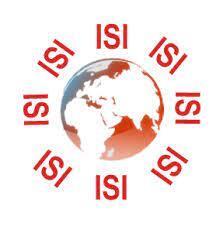Impact of Climate Variation on Malaria Incidence in Rwandan Highland
DOI:
https://doi.org/10.62103/unilak.eajst.8.8.154Keywords:
Climate variability, Highland, malaria, incidence, prevalenceAbstract
Fluctuations in climate variation could influence the emergence and re-emergence of vector-borne infectious diseases such as malaria in highlands. The transmission of malaria is caused by vector and arthropod that strive in area with high rainfall and they are limited by low temperatures and high altitudes. Malaria vectors for many years were found in lowlands and not found in highlands because of weather conditions. The present research sought to evaluate the possible impacts of climate variability on malaria incidence in Rwandan highlands. Using secondary data on malaria cases from medical records in sampled using multistage sampling Health Centres of highlands (26) and meteorological data collected from meteorological stations of Mubuga, Kivumu and Karambi. Regression analysis was used to determine relationship between climate variability and malaria prevalence. Analysis of data for 11 years period indicated that; maximum temperature did not have high variation; it was in the range of 23 and 25oC, while minimum temperature varied considerably with a range of 8.02 and 14.55, average of minimum and maximum indicated linear growth as it combines the values of maximum and minimum temperature (16.34 and 19.54oC), rainfall was increasing throughout of the period of study with high variation and extreme weathers, the monthly average was between 95.62 to 156 mm. In Karongi it varied between 87.00 to 122 mm, Muhanga it was between 80.63 to 235 mm and Rubavu it was between 81.33 to 136 mm. Relative humidity was also important, its variation was not too high since the highest value of relative humidity was 72.24% and the lowest was 66.10%. Generally relative humidity was decreasing with time. With 5% level of significance, all selected climate parameters were not correlating with malaria transmission at the same level; in Karongi malaria prevalence had a strong positive
East African Journal of Science and Technology, Vol.8 Issue1, 2018 Abias Maniragaba (P.56-75)
2
correlation with: maximum temperature and rainfall, r=0.68, a moderate positive correlation with rainfall and relative humidity, r=0.5 and a strong positive correlation with average temperature and rainfall, r=0.66. In Muhanga malaria prevalence had a strong positive correlation with minimum temperature, r=0.76, while in Rubavu malaria prevalence had a weak positive correlation with maximum temperature and relative humidity, r=0.44 and a weak positive correlation with average temperature, rainfall and relative humidity r=0.33. Results showed the evidence of the existence of relationship between climate parameters and malaria prevalence in highland areas of Rwanda. All national programs on malaria control should take into account this area of Rwandan highland, since it is highly susceptible to climate change and malaria prevalence.








